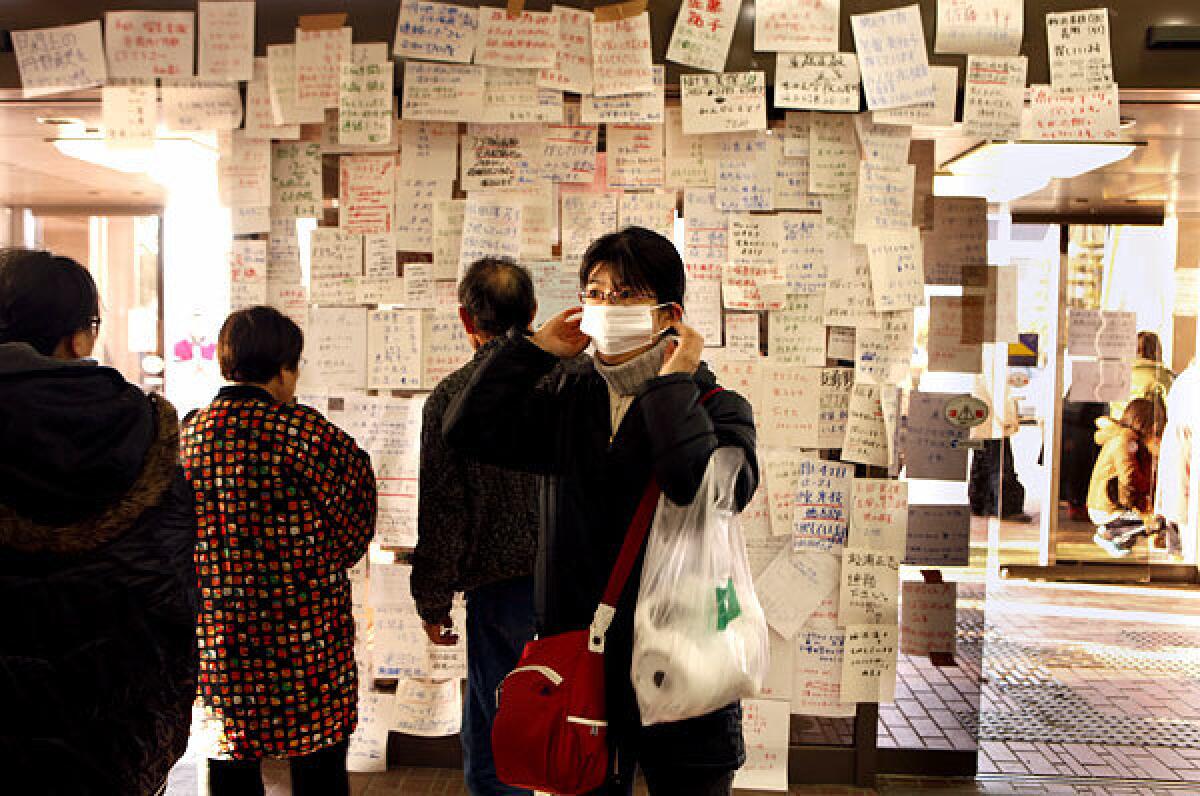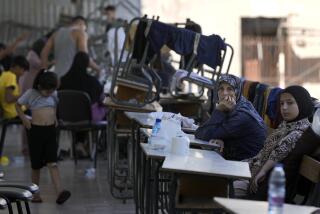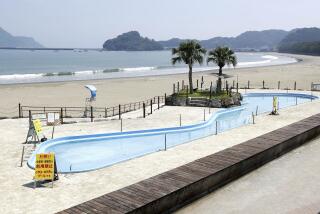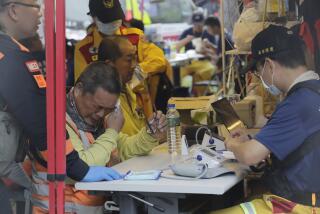Relatives search for Japan quake victims under chaotic conditions

Reporting from Iwanuma and Natori, Japan â The lists name survivors housed in evacuation centers, long printed lists hanging from bulletin boards in buildings that usually serve as culture halls, junior high schools and city government headquarters.
Then there are the makeshift notes, written in green and red felt pen, messages to reassure loved ones who may also have survived.
âOtomo Takako here,â says one among the many ringing the double doors of the Natori City Hall. âPlease donât worry about us. We are safe.â
âIâm in the offices of the Tire-Offâ company, reads another. âCome find me there, my dear son Kazuki.â
Photos: Scenes of earthquake destruction
Yet there is no central list of the missing, the tens of thousands of people still unaccounted for since Fridayâs massive earthquake and tsunami lurched and propelled their way through the now-grieving coastal towns of northeastern Japan.
âPeople go from one center to another to look for family,â said Shigeki Yamamota, who was manning the front desk at the Nagamachi Minami elementary school, one of dozens in Sendai, the regionâs largest city.
With Japanâs penchant for privacy, Yamamota said, municipalities here just donât keep detailed records of where residents live. âItâs not like China where we have people registered, so it makes it harder to figure out who is missing in a situation like this.â
In a country that so prides itself on order, confusion now reigns. Four days after the tragedy, estimates of how many were killed or are missing still vary wildly, ranging from the official death toll of about 1,800 and the âmissingâ list of 2,369 to fears that tens of thousands are dead.
The numbers are expected to rise dramatically as recovery efforts expand to areas where entire communities were virtually wiped from the map. On Monday alone, about 2,000 corpses were reported washed ashore at various locations in Miyagi prefecture. And the Kyodo News service said a survey of local governments in the earthquake zone, where rain and snow are expected Wednesday, indicated that 30,000 people remained missing, though many may have found refuge elsewhere.
Frustrations mount as residents continue their search for information.
âPeople are getting increasingly angry that they canât find out who is dead and who is alive,â said Chizuko Nakajima, a senior citizen department worker at Natori City Hall, who was helping distribute food to the newly homeless Monday.
Canvassing neighborhoods is next to impossible: The tsunami waves so rearranged the landscape that in the Iwanuma neighborhood where Shuko Aizawaâs 99-year-old mother lived, a yellow house was picked up and plopped down nearly intact a mile away, across a canal and a four-lane road to land on top of a gas station. Bodies also were swept from one neighborhood to the next, or else out to sea.
Still, with no official information forthcoming, the best that Aizawa could do Monday was to search in the mud where the once-pretty seaside community near the Sendai airport had stood.
Aizawa, wearing yellow rubber boots, slogged through a neighborhood reduced to swampland. Clutching her husbandâs arm with one hand, a designer purse in the other, she climbed over a toppled pine tree, stepped around scattered blue roof tiles and walked gingerly past a harpsichord buried in the mud.
âWe tried all the evacuation centers. We went to this one, then the other, then they sent us somewhere else,â said a sobbing Aizawa, a trim, well-dressed woman in her early 70s. âThere was no information, so we came here.â
But the mud was not forthcoming, either. Aizawa could not recognize her motherâs street, let alone the house. âIs this the street? Whereâs that intersection?â she repeatedly asked her equally befuddled husband.
She knelt next to something yellow in the mud. âDo those look like my motherâs curtains?â
Others continue to search evacuation centers, hoping against hope to find a handwritten note or a name on a list. People seeking relatives have traveled between myriad sites, not easy, given that most public transport is shut down and gasoline is in acutely short supply. They often wind up scribbling notes of their own on doors or chalkboards.
At the Nagamachi Minami elementary school, volunteers said that on Sunday alone, 2,000 people came looking for relatives. Two of the notes there read: âGone to Grandmaâs house.â âLook for me in Fukushima.â
Authorities said the number of displaced people across Japan has grown to 550,000, the highest since World War II. About a dozen agencies have announced websites for information about the missing, including one hosted by Google.
But there is no consolidated site, let alone functioning computers in many affected areas, making it difficult to decide where to look. The International Committee of the Red Cross announced Monday that it was also launching a page.
âThe information is kind of spread out. In each evacuation camp, they improvise their own lists,â said Hiromasa Kato, an assistant professor of engineering, who was staying in a shelter in Sendai. âYou might think of Japan as very high-tech, but these local administrations use very outdated systems.â
For many seeking their loved ones, things could take a turn for the worse.
A few blocks from Natori City Hall, a center to handle corpses has been set up on the grounds of a sports training hall. About 110 bodies have been recovered, including those of three children, said Bin Kimura, the operations head. Twenty have been positively identified and their names placed on the deceased board at the center.
In front of the building, on what was once a playing field, workers were busy erecting a blue tent, 100 feet by 30 feet, beside stacks of cardboard-wrapped coffins in case the massive gymnasium isnât large enough to handle the eventual number of bodies.
Friends and relatives who canât find their loved ones in person or on any of the lists come here. Theyâre not allowed into the gymnasium to view the bodies. Instead, staffers in an outbuilding take down physical details of the missing along with any dental records. Then they go into the hall to try to match the information with the bodies.
Photos: Scenes of earthquake destruction
Demick reported from Iwanuma and Magnier from Natori. Times staff writer Laura King in Tokyo contributed to this report.
More to Read
Sign up for Essential California
The most important California stories and recommendations in your inbox every morning.
You may occasionally receive promotional content from the Los Angeles Times.










